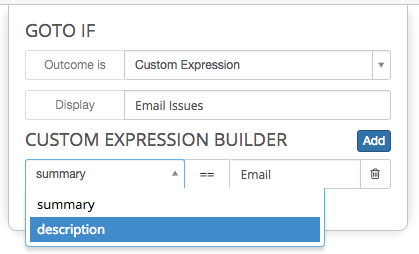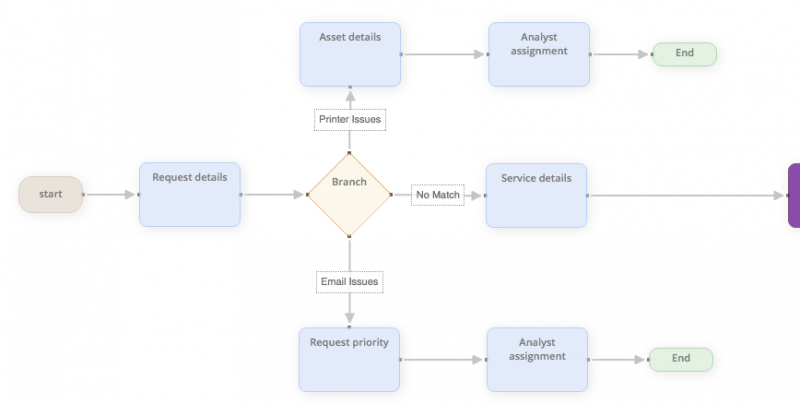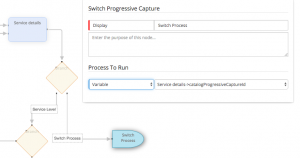Intelligent Capture Designer
| Home > Administration > Progressive Capture Designer | Index |
IntroductionProgressive Capture is a graphical workflow tool that provides a new and simple way to define the capturing of information for a particular application. An application that uses Progressive Capture will include a number of small forms for collecting information related to the application. These forms can be optionally added, ordered, and branched depending on the information being captured. |
Related Articles |
Nodes
When building a progressive capture script there are a few different nodes that are available to use when considering your design
- Start
- Every progressive capture flow will have a Start node. This is the entry point for all progressive capture scripts.
- Form
- You can choose from a number of pre-configured small forms (in Form Properties) and place them in the sequence you need.
- Custom Form
- Allows you to create your own form complete with custom fields and values.
- Branch
- Allows a custom expression to alter the flow to show different PCF's.
- Switch
- Allows you to link progressive capture's together and seamlessly switch from one to another
- End
- Every progressive capture flow will have at least one of these to end the flow.
Branches
In progressive capture, branches allow the workflow designer to send the analyst down different routes to potentially collect different information depending on the choices that are made on progressive capture forms. It is important to remember that a branch node will always inherit the outcomes from its parent progressive capture forms. This means that if you place a branch node after the request details form (as shown in the below screenshot), the only pieces of data that you can make a decision on are the Summary and Description fields (only 2 fields on this default form).
To add a custom expression to a decision node you must first connect the decision node to the next node in the flow. You can then click the linking line and define your custom expression. You can define multiple outcomes from a decision node, however you must always have at least one valid outcome, otherwise the progressive capture flow could potentially have nowhere to go which will make it error.
Switch Capture
In Progressive Capture the Switch Capture node provides the ability to seamlessly move to or link Progressive Capture flows together. One example of where this maybe useful is in Service Manager when choosing a Request Catalog item from the Services Progressive Capture form, the switch process can be used to switch to the the Progressive Capture flow which is assigned to the chosen Request Catalog item.
Using this node replaces the previous behaviour of jumping from an initial progressive capture to another, and in essence any forms used in both are evaluated and re-used when jumping, it also removes the need to evaluate which forms in the second progressive capture to use, and any issues associated with progressive capture forms being skipped.
Using this node, will in effect continue from the initial progressive capture, into the next progressive capture rather than replace it. This means it does not need to evaluate which forms to skip, it simply ignores any forms already used in the initial progressive capture.
Advantages of using the Switch Capture Node
- When switching processes the UI for the analyst is smooth as you are linking one process to another not replacing one with another
- The ability to return / revisit the forms in the initial process capture flow, once you have switched or linked to a second process capture flow in order to change values / choices or even change which progressive capture to switch / link too.
- You don't need to include the same forms in both Progressive Captures, for example the Customer Search form could just be used in the initial progressive capture, and removed from the catalog item progressive capture (obviously if it already exists it will simply be ignored).
Example
Following the use of the Services Details form, you may include a Branch node, and have two outcomes.
- 1. Using a Custom Expression, perform a check to see if 'Service details -> catalogProgressiveCaptureId Is Set (if a request catalog item has been selected) from here link to the Switch Capture node
- 2. Using another Custom Expression perform the same check but set this to Is Not Set (a Service rather than a request catalog item has been selected) and build your logic accordingly, equally you could define multiple other outcomes from this branch node to reflect the different service choices and paths you wish to take.
On the Switch Capturenode, you can configure this to link to a specific new process, or use a Variable to link to the progressive capture linked to the request catalog item which has been chosen. In this example this is what we will do and the Variable to use would be Service details -> catalogProgressiveCaptureId
- Note: with the introduction of the Switch Capture option, the behaviour will alter slightly on the Services Details form, is as much as the user will now have to select the Next button if they are selecting either the Service or the Request Catalog Item in order to progress the progressive capture. Previously if a Request Catalog Item was chosen the progressive capture would immediately progress without the need to click Next.
Default Form Configuration
Whilst default forms have a set purpose, it is also possible to configure aspects of these forms.
Customised Forms
As well as standard forms, Hornbill also provide the ability to create your own custom forms. With custom forms, you can create multiple questions of different field types for analysts and customers to answer during progressive capture.
- New - A Never Skip configuration option has been added, which can be set to True, this will ensure that this form is never bypassed in your progressive capture flow, even if custom questions have default values set, and the questions are not set to mandatory. This will ensure the user will always be presented with the form to at least validate the default choices, or change them if required.
Mapping Fields from Customised Forms
When creating customised forms, and custom questions the default behaviour is for the question and answer to be visible on the request form in a Questions collapsable section. It is also possible to map the answer from a custom question to one of the default fields on a request.
Sharing and Visibility
Progressive capture owners will be able to view their own captures, and captures which have been shared with them from the Progressive Capture List.
When creating or editing a capture it is possible via the Manage Process Settings and Grant Access To option to share your process with:
- Roles
- Users
- Groups - Configured via the Organisational group structure
It is possible to share captures with multiple users, roles and groups. Once a capture has been shared, the user will be able to view the capture from the Progressive Capture list.
To remove visibility to a specific User, Role or Group simply select the Trash Can icon next to the item you wish to stop sharing the capture with.
To enforce the above sharing and visibility controls, ensure the system setting security.bpm_access_controls.enabled is set to On from the administration console:
- Home > System > Settings > Advanced
Progressive Capture Options
Each Progressive Capture script has a number of configuration options
- Download
- Download the definition file - downloads to a .txt file, a copy of the current progressive capture script
- Upload
- Upload a pcf.txt file to the Progressive capture - this will replace the current progressive capture script content
- Print out a document that provides a graphical representation of the the Progressive Capture script
- Save (Validate, Activate, De-activate)
- After the creation or editing of a Progressive Capture script, your script needs to be saved and then activated to make if available for use. Any Progressive Capture that you wish to keep but not have it available for use can be de-activated.




